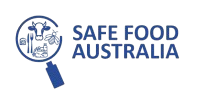In Australia the following allergens must be declared on a food label. These allergens are the most common foods in Australia that could cause a reaction.
- Added sulphites in concentrations of 10 mg/kg or more
- Any of the following cereals (if they contain gluten: barley, oats, rye)
- Wheat
- Any of the following tree nuts: almond, brazil nut, cashew, hazelnut, macadamia, pecan, pine nut, pistachio, walnut
- Crustacea
- Egg
- Fish
- Lupin
- Milk
- Mollusc
- Peanut
- Sesame See
- Soybean
Note that some residents or patients may also experience mild allergic symptoms to fresh fruits and vegetables such as kiwi, applies, peaches, melons, pineapple and papaya.
As a food business providing food to vulnerable persons control measures should be implemented to to ensure residents or patients are not served a meal that contains an allergen that could cause a severe reaction.
Managing allergens
- Have a system in place for identifying residents or patients with any food related allergies upon admission to the facility
- Have a system in place to identify the allergens that are on site including those that are present in dry ingredients. This includes products that have a label with an allergen declaration or allergen warning such as ‘may contain’
- Design the menu to reduce the risk of allergens and where possible, have an allergen-free alternative meal
- Have standard recipes in place for all food processed on site, these should be able to accessed by all staff if required
- Have a system in place to identify the allergens that are removed from the original packaging (controls such as stickers, taking a photo of the label with the allergen information and storing it for reference)
- Store products that contain allergens in a manner that will not contaminate allergen free products
- Have a system in place to identify allergens in prepared meals such as sandwiches, desserts and main meals (specifically if they are going to servery areas for plating)
- Have a system in place to identify allergen free meals such as tray labels or stickers
- Have a system in place to control allergen spills
Cross contact controls
- Practice good hygiene prior to preparing an allergy free meal: thorough handwashing and wearing a clean apron
- Clean and sanitise the work area
- Prepare allergen free meals prior to meals containing allergens
- Use clean and sanitised equipment for preparing and serving allergen free meals

